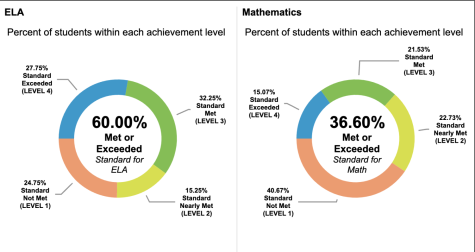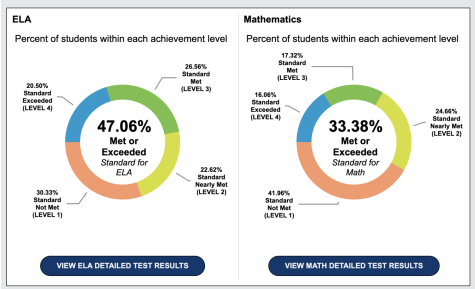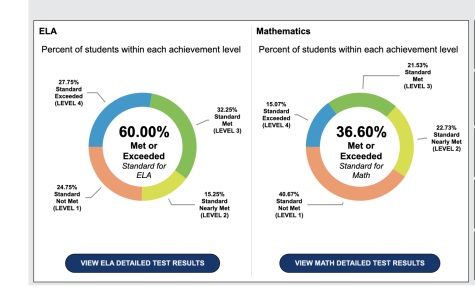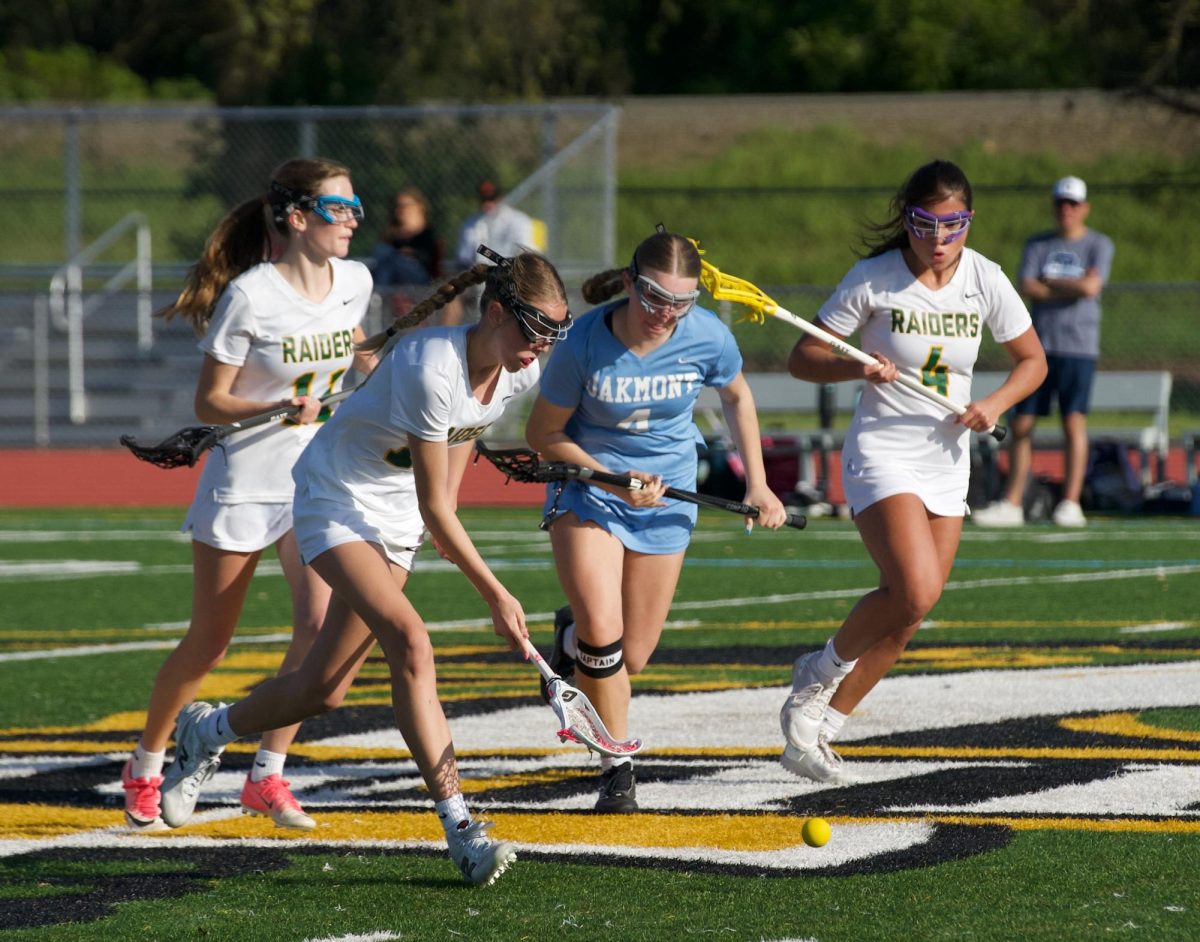Rio principal puts test scores in context
In an interview with the Mirada, Principal Kelly explains why state tests scores fell sharply–and why Rio didn’t do as poorly
The results are in.
They’re alarming.
Last week the state Education Department released the statistics for the 2022 California Assessment of Student Performance and Progress, more well-known as the CAASPP test. Student scores fell statewide, and Rio was unable to escape this decline. The percentage of Rio students who met English language standards stayed roughly the same–increasing 0.8%– but the percentage meeting math standards fell by 5.9%.
Principal Cliff Kelly had a theory as to why there was a drop in math scores but not in English scores.
“My hypothesis would have something to do with distance learning,” Kelly said. “Some of the skill sets you need to master in English are skill sets that don’t require scaffolding on the same level that they do in math.”
Kelly used an example to illustrate his point. Two concepts taught in English are irony and symbolism. However, “your ability to understand irony doesn’t affect your ability to understand symbolism,” as Kelly said. But he believes it’s different for math.
“Oftentimes you can’t really climb up the ladder of skills in math if you don’t have a foundational understanding of math. If you can’t do some of the basic things like adding, subtracting, dividing, and multiplying, then when you start doing some advanced formulas it can be really difficult,” Kelly said.
Kelly believed the COVID-19 pandemic was responsible for the drop in student test scores.
“I think it’s much more difficult when you don’t have human contact to understand,” Kelly said. Referring to students’ habitual black screens on Zoom, he said, “It’s hard to meet your individual needs when there’s 36 kids, and all I see, if I’m lucky, is your face.”
However, it’s not all bad news. Rio outperformed both San Juan School District and California in general in both subjects; statewide, reading fell by 4%, while math fell by 7%.
Kelly gave a possible explanation for Rio’s better statistics: it has a higher attendance rate than other schools.
“Having a higher rate of attendance means that you’re not missing a lot of days, and the more time you miss as a student, the harder it is,” he said.
Overall, roughly 60% of Rio students met the English language standards; for math, that fraction was just 36%. Kelly hoped to see those figures rise.
“Not as high as we want them,” Kelly said, referring to the numbers. He said that the school faculty would take action based on that information. “That’s how we try to look at data: now that we see that there’s something that we want to improve on, … we create some action steps that could potentially improve that.”
There was also a noticeable disparity in the decline of scores among different demographic groups. Asian students at Rio, for example, saw a staggering fall of 33% in their math scores, while English language learners actually had an increase of 9% in their English scores.
Kelly said that quirks of statistics are partially to blame for this discrepancy. In particular, demographic groups at Rio have various numbers of kids in them.
“The smaller the number is, the more highly influenced it is depending on how one person does,” Kelly said. The school examines which category of students, whether by demographic group or not, is in need of the most help, and then the faculty analyzes “what kind of service may those students be getting, or maybe need, that they are currently not, that would help them out.”
For example, English language learners are the fastest-growing segment of the Rio student population.
“Knowing that, we try to create some supports around that,” Kelly said. “The way I would go about trying to support them would be working with our EL classes that we have.”
Another issue that may be distorting the test results is apathy among students, many of whom did not care about the CAASPP test since it didn’t affect their grade. Does this lack of effort impact Rio’s scores?
“A hundred percent,” Kelly said. He emphasized that accurate data is not only useful for students and their families to know where they can improve, but it is also used by the school to determine where it needs to focus its time– and money.
“How do I know, if students aren’t trying, that the data that’s there is accurate?” Kelly asked.



Still, Kelly doesn’t believe that the standards set for students are too high.
“It’s our job to find more levels of support, more ways to support you,” Kelly said. “That’s the job of the school and the teachers, to try to find out as many different ways as possible to support students.”
Related news: Rio test scores avoid sharp decline seen in state and nation































